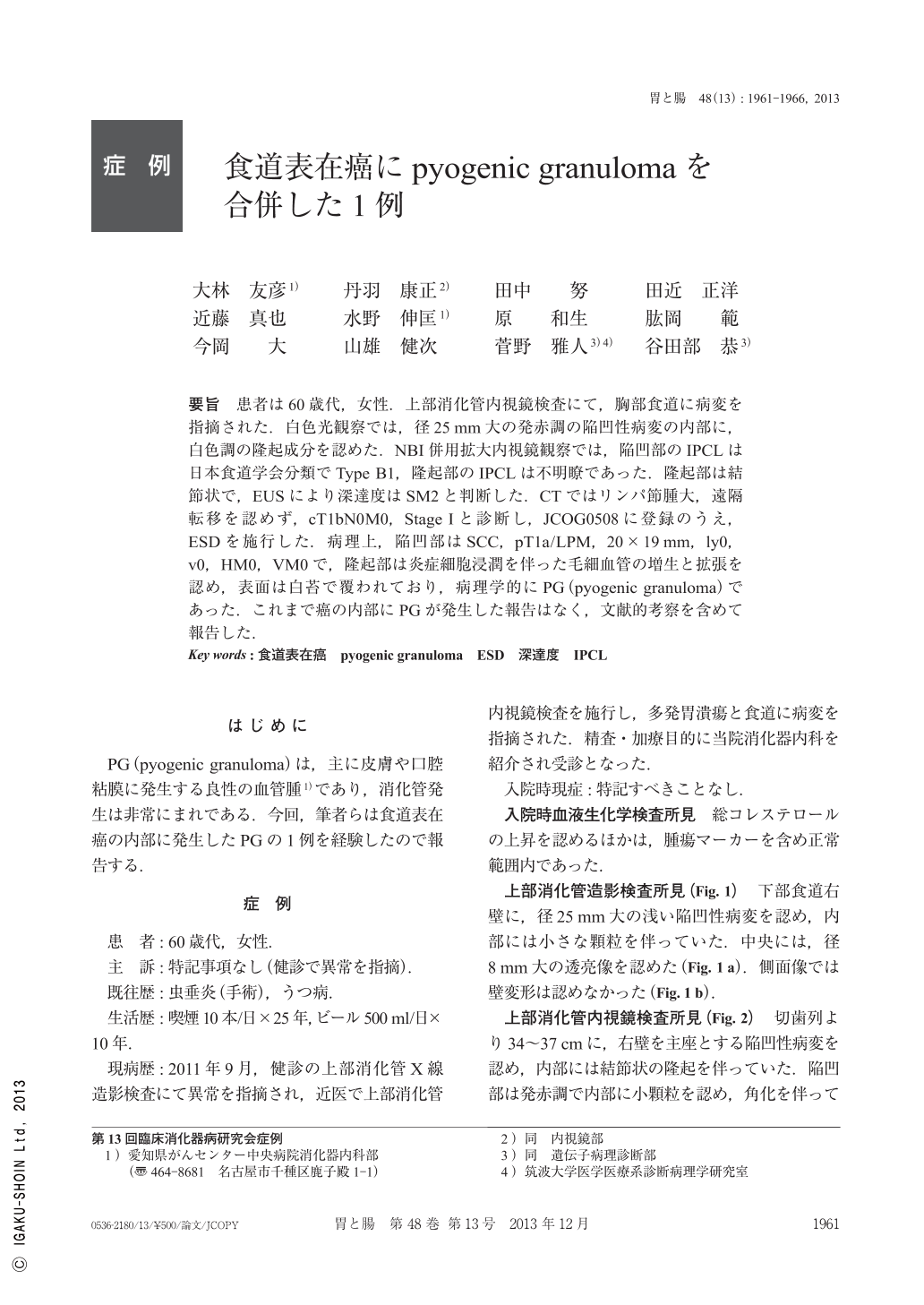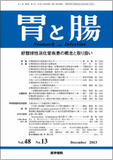Japanese
English
- 有料閲覧
- Abstract 文献概要
- 1ページ目 Look Inside
- 参考文献 Reference
- サイト内被引用 Cited by
要旨 患者は60歳代,女性.上部消化管内視鏡検査にて,胸部食道に病変を指摘された.白色光観察では,径25mm大の発赤調の陥凹性病変の内部に,白色調の隆起成分を認めた.NBI併用拡大内視鏡観察では,陥凹部のIPCLは日本食道学会分類でType B1,隆起部のIPCLは不明瞭であった.隆起部は結節状で,EUSにより深達度はSM2と判断した.CTではリンパ節腫大,遠隔転移を認めず,cT1bN0M0,Stage Iと診断し,JCOG0508に登録のうえ,ESDを施行した.病理上,陥凹部はSCC,pT1a/LPM,20×19mm,ly0,v0,HM0,VM0で,隆起部は炎症細胞浸潤を伴った毛細血管の増生と拡張を認め,表面は白苔で覆われており,病理学的にPG(pyogenic granuloma)であった.これまで癌の内部にPGが発生した報告はなく,文献的考察を含めて報告した.
A woman in her sixties with no symptom was found to have a tumor in her esophagus during screening EGD(esophagogastroduodenoscopy). She was referred to our hospital for further examination and treatment of the esophageal tumor. The EGD showed a slightly depressed lesion with a smooth polypoid part inside in the lower esophagus. Iodine staining for both the depressed lesion and the polypoid part was unstained. CT showed neither lymph node nor distant metastasis. Endoscopic ultrasonographic images showed that the depressed lesion was localized in the mucosal layer but the polypoid part had invaded the submucosal layer. Biopsy specimen showed squamous cell carcinoma from the depressed lesion, but revealed no malignant cells with vascular proliferation from the polypoid part. We performed endoscopic submucosal dissection for this tumor which was 20×19 mm in size. Microscopically, the histological components for the depressed lesion and polypoid part were different from each other. That is, the depressed lesion was composed of squamous cell carcinoma with a depth of lamina propria mucosae. In contrast, the polypoid part was composed of proliferation of the capillaries with inflammatory cell infiltration located between the mucosal layer just below the necrotic tissue and the submucosal layer. Final histological diagnosis was squamous cell carcinoma with PG(pyogenic granuloma).
PG is known as a benign tumor with a polypoid form of hemangioma. The tumor usually occurs in the skin, and gastrointestinal involvement is extremely rare except for the oral cavity. The occurrence is considered to be a reactive change as a result of trauma. However, the precise pathogenesis still remains unknown. PG occurring in the carcinoma has not previously been described and our case is the first report of PG that occurred in esophageal carcinoma.

Copyright © 2013, Igaku-Shoin Ltd. All rights reserved.


